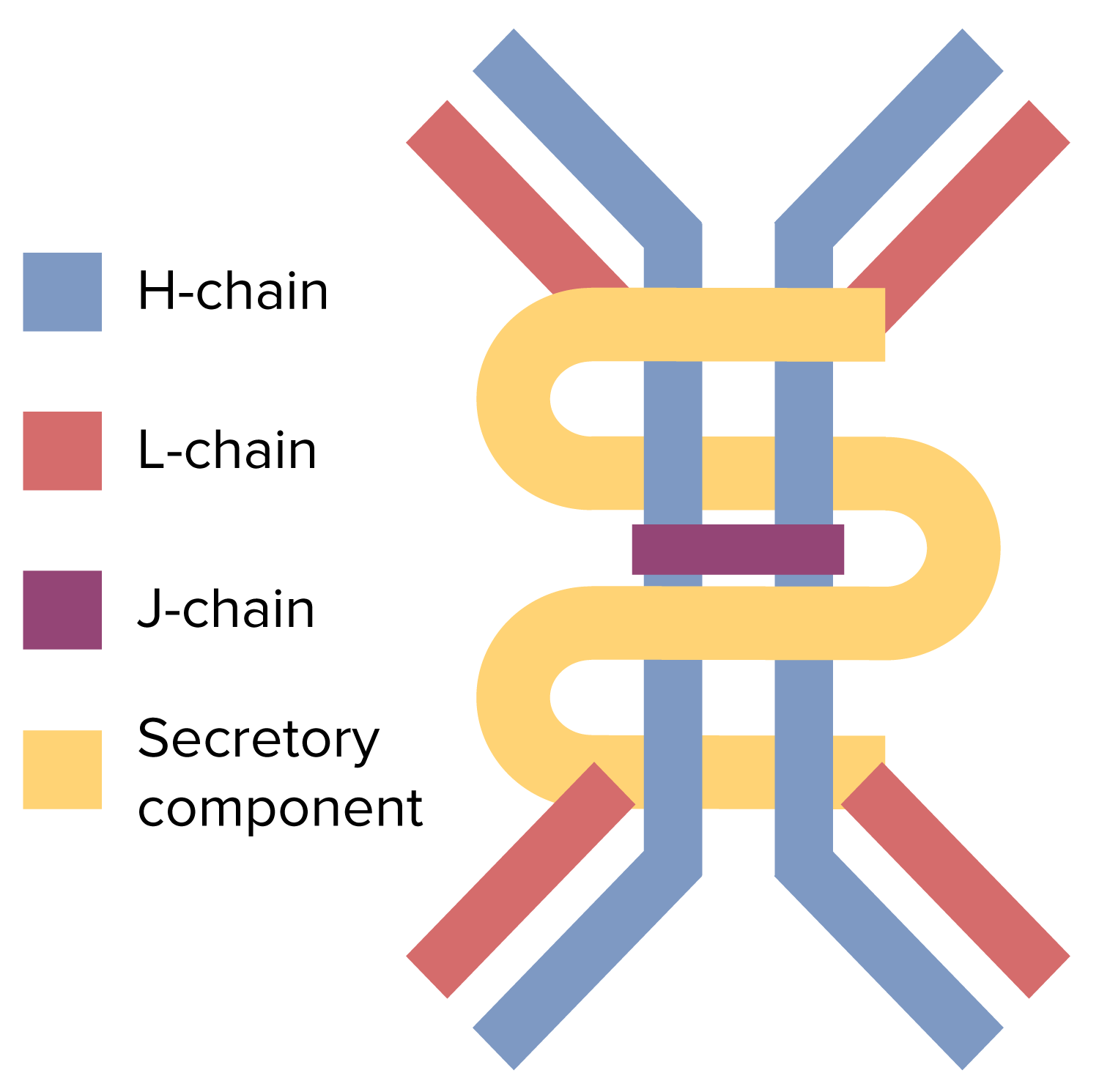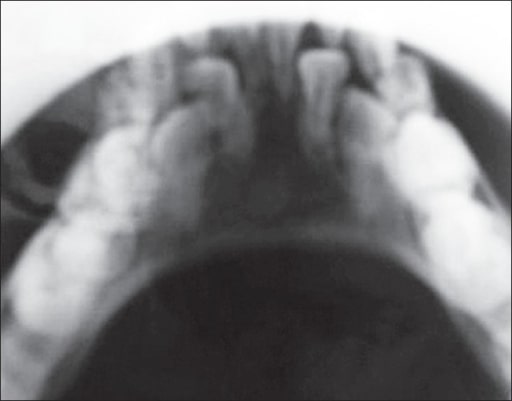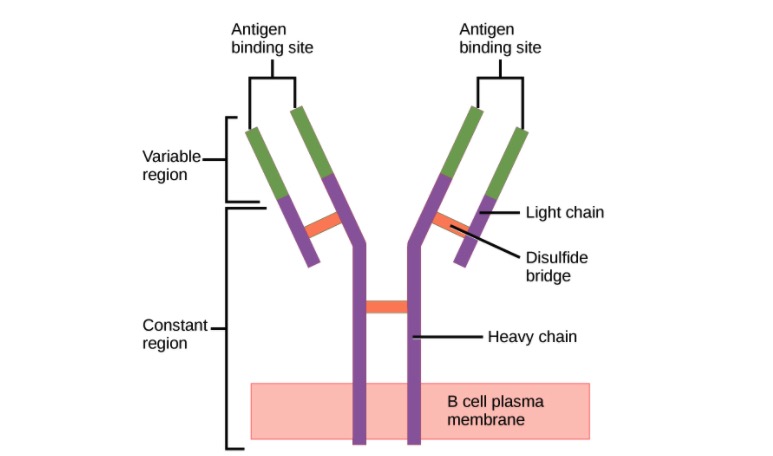Playlist
Show Playlist
Hide Playlist
Humoral Immune Deficiency
-
Slides HumoralImmuneDisorders Pediatrics.pdf
-
Download Lecture Overview
00:01 In this lecture, I'm going to review the basic humoral immune disorders in children. 00:08 Basically we're talking about disorders where children can't mount a humoral or blood response to these organisms. 00:17 These patients are more prone to encapsulated organisms. 00:20 Examples include Strep pneumoniae, H. flu (generally non typeable) and Neisseria meningitidis. 00:28 So, these patients will typically present with sinopulmonary infections. 00:33 Different humoral immune deficiencies present at different ages and in different ways. 00:39 Let's review them by age group. 00:42 In children who are 0-6 months , these children will generally present if they have a severe humoral deficiency. 00:48 Examples of this would be X-linked agammaglobulinemia or Hyper IgM syndrome which is quite rare. 00:56 Between 2 and 6 years of age, children will often present if they have IgA deficiency, a selective IgG deficiency, hypogammaglobulinemia, or hyper IgE syndrome or Job syndrome. 01:11 There's some variability here, for example, some patients with hypogammaglobulinemia will not show up too much later in life even maybe when they're 18. 01:20 But this is generally when they present. 01:22 Flip side, patients will present much later if they have common variable immune deficiency It will be very unusual to present before the age of 6. 01:32 The average age is in the 20s. 01:34 Or they may have acquired disease. 01:37 An acquired example of a humoral immune deficiency would be HIV or lupus. 01:42 So, let's start with Job syndrome. 01:45 Patients with Job syndrome have very high levels of IgE, in the thousands. 01:51 This patients will typically present with coarse facies. 01:56 Although it's hard to pick it up in a child, based on their appearance alone. 02:00 Coarse facies means large ears, large nose, large chin, large eyes, generally large sub units on the face. 02:09 But coarse facies is not typically how we make the diagnosis. 02:13 We usually make it because of their skin and their infections. 02:17 So these patients will have recurrent sinopulmonary infections. 02:21 By sinopulmonary, I mean sinosinus and pneumonia or otitis media. 02:26 They can also develop eczema and will have significant eczema, and they can develop recurrent cellulitis of the skin. 02:34 This is classic for Job syndrome. 02:37 Treatment for these patients is supportive. 02:40 We provide them antibiotics for their bacterial infections. 02:44 And we generally, need to to support them because this is a very challenging disease to live with. 02:49 That's where the biblical name of Job comes from. 02:53 These patients feel like life is consistently a trial. 02:56 So, we have to support them. 02:58 The next is IgA deficiency. 03:02 The vast majority of patients with IgA deficiency have no symptoms. 03:09 But a smaller percentage will present in 4 different possible ways. 03:15 One, they may present with recurrent sinopulmonary infections. 03:20 We treat them for each of their own infections and you might consider giving IVIG to supplement the effect of that treatment. 03:29 Patients may present with GI disorders such as celiac or inflammatory bowel disease. 03:34 In this case, we'll treat the disease and again consider IVIG. 03:38 They may present with autoimmune disease, such as lupus or JIA. 03:43 Again, treat disease, consider IVIG. 03:46 And lastly, they may present uniquely with anaphylaxis to transfusion of blood or IVIG which we were considering to give them. 03:55 These patients may require desensitization to blood products, which is a complicated procedure. 04:03 Let's switch gears now to X-linked agammaglobulinemia or hypogammaglobulinemia. 04:09 The issue with these patients is they have relatively no or little immunoglobulins in the blood. 04:17 This is typically in males because it's X-link recessive. 04:21 And these patients will often present very severely, early in childhood with failure to thrive. 04:28 Later in childhood or an early adult presentation is typical of hypogammaglobulinemia but not agammaglobulinemia. 04:38 Typically, these patients will have recurrent otitis media. 04:42 They will have recurrent sinusitis, recurrent pneumonia and we'll treat them with regular IVIG infusions every 3 weeks. 04:51 We're going to provide them with the IVIG they need to survive. 04:56 Let's switch gears one more time to common variable immune deficiency. 05:00 This is a B-cell deficiency. 05:03 These patients have a high risk of auto-immune disorders like autoimmune hemolytic anemia or immune thrombocytopenic purpura. 05:12 They're also at a high risk for malignancies such as lymphoma or gastric carcinoma. 05:18 And typically these patients present later. 05:22 The average age of patients is 26 years old, but they may present earlier also. 05:27 These patients are going to be treated with IVIG. 05:32 So, we'll treat them and provide them with the IVIG they need to keep them going. 05:37 So, that's my summary of the humoral immune deficiencies in children. 05:41 Thanks for your time.
About the Lecture
The lecture Humoral Immune Deficiency by Brian Alverson, MD is from the course Pediatric Allergy and Immunology. It contains the following chapters:
- Humeral Immune Deficiencies
- Job Syndrome
- Selective IgA Definciency
- X-linked Agammaglobulinemia or Hypogammaglobulinemia
- Common Variable Immune Deficiency
Included Quiz Questions
Which of the following is true about common variable immune deficiency?
- Patients are at increased risk for malignancy
- It is a T-cell disorder.
- Steroids are the mainstay of treatment.
- Patients with the disorder have a low risk of autoimmune disease.
- It typically present in the first 5 years of life.
Children with combined immune deficiency are especially prone to infection with which type of organisms?
- Encapsulated bacteria
- Catalase negative bacteria
- Catalase positive bacteria
- Non-encapsulated bacteria
- Fungi
Which of the following diseases tends to occur during the 2nd-3rd decade of life?
- Common variable immunodeficiency
- Hypogammaglobulinemia
- Hyper IgM syndrome
- Job syndrome
- X-linked agammaglobinemia
Patients with Job syndrome have very high levels of which of the following immunoglobulins?
- IgE
- IgA
- IgG
- IgM
Customer reviews
5,0 of 5 stars
| 5 Stars |
|
2 |
| 4 Stars |
|
0 |
| 3 Stars |
|
0 |
| 2 Stars |
|
0 |
| 1 Star |
|
0 |
Dr. Alverson is wonderful! I really enjoyed this brief but informative lecture! Thank you!!
Excellent lecture, it gives a clear idea of complex diseases. Thank you!







